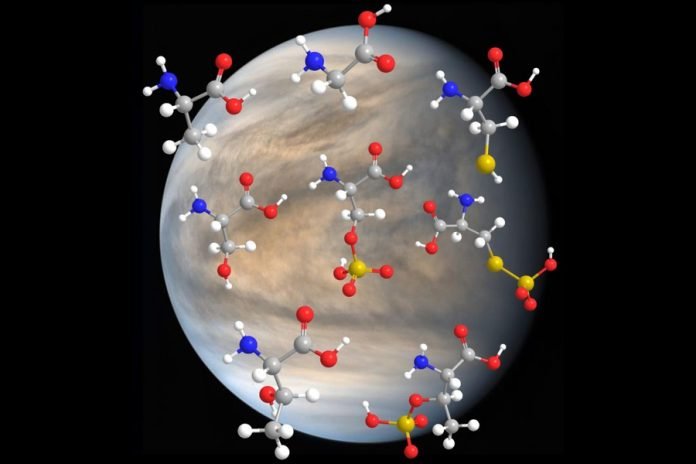
Scientists have long marveled at the mysteries of Venus, Earth’s neighboring planet, known for its extreme conditions.
The surface of Venus is hostile to life as we know it, with temperatures hot enough to melt lead.
However, the clouds of Venus tell a different story.
Floating 30 to 40 miles above the surface, these clouds offer milder temperatures that have intrigued scientists. Could these clouds be a sanctuary for life?
In a surprising twist, researchers from the Massachusetts Institute of Technology (MIT) have discovered that Venus’s clouds, despite being filled with highly toxic sulfuric acid, might still harbor the essential building blocks of life.
Their study, published in the journal Astrobiology, reveals that 19 amino acids—crucial components for life on Earth—can survive in conditions similar to those in Venus’s clouds.
This finding is groundbreaking. Sulfuric acid is known for its destructive power, capable of dissolving metals and obliterating biological molecules.
Yet, the MIT team found that the core structure of these amino acids remains unchanged in sulfuric acid concentrations ranging from 81 to 98 percent, mirroring the acidic environment of Venus’s clouds.
Janusz Petkowski, an MIT researcher, expressed astonishment at how sulfuric acid, contrary to previous beliefs, doesn’t necessarily spell doom for organic chemistry.
This discovery opens new possibilities for the existence of life on Venus, suggesting that the planet’s acidic clouds could nurture complex chemicals essential for life.
Sara Seager, a leading scientist in the study, underscores that this doesn’t directly indicate life exists on Venus. However, it significantly boosts the argument that Venus’s clouds could support life’s complex chemistry.
Seager is also the principal investigator for an upcoming mission to Venus, aimed at probing the planet’s clouds for signs of organic molecules. This mission, scheduled for January 2025, seeks to further unravel the mysteries of Venusian life.
The study embarked on a journey to understand if the acidic clouds of Venus could accommodate the fundamental elements of life. Prior research had already shown that certain fatty acids and nucleic acids are stable in sulfuric acid.
The recent study focused on amino acids, which combine to form proteins crucial for life’s functions, such as energy production, muscle building, and tissue repair.
The research was conducted during the pandemic, starting in a home laboratory before moving to MIT’s facilities.
The team tested 20 amino acids essential for life on Earth, finding that 19 of them remained stable in sulfuric acid solutions similar to Venus’s cloud conditions. This stability suggests that the backbone of these amino acids could withstand the acidic environment of Venus.
While many challenges remain in proving life can thrive in such acidic conditions, the study adds a hopeful note to the possibility of life on Venus.
As we continue to explore the cosmos, Venus’s acidic clouds offer a fascinating avenue for discovering life beyond Earth, challenging our understanding of where and how life can exist in the universe.



